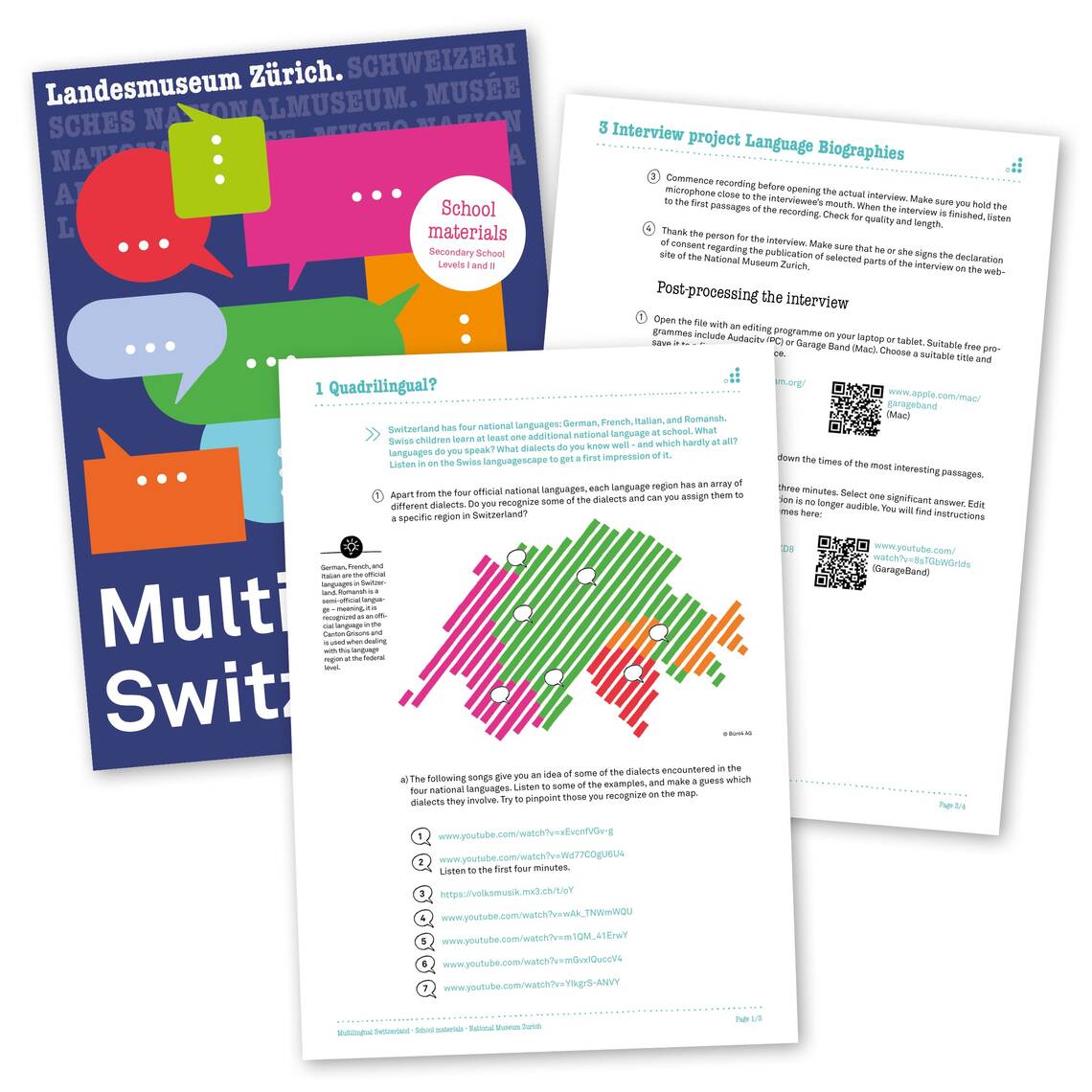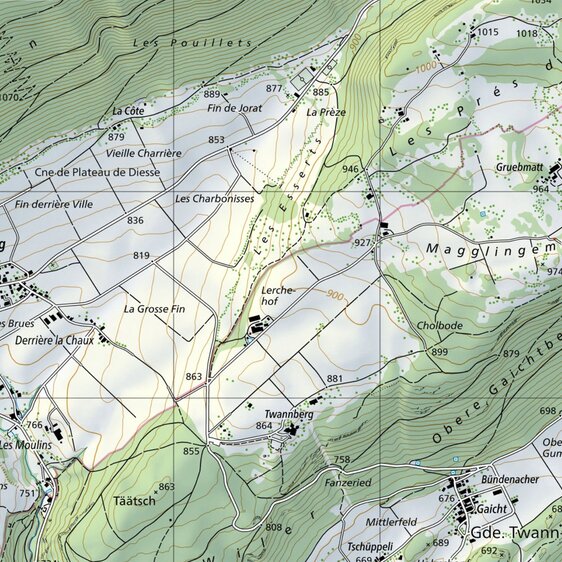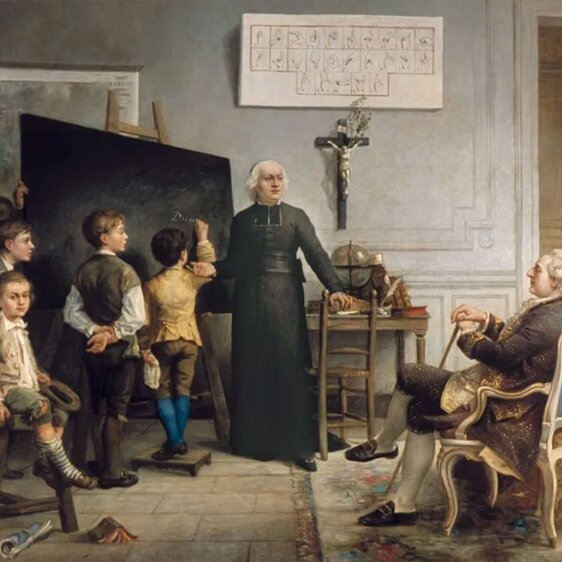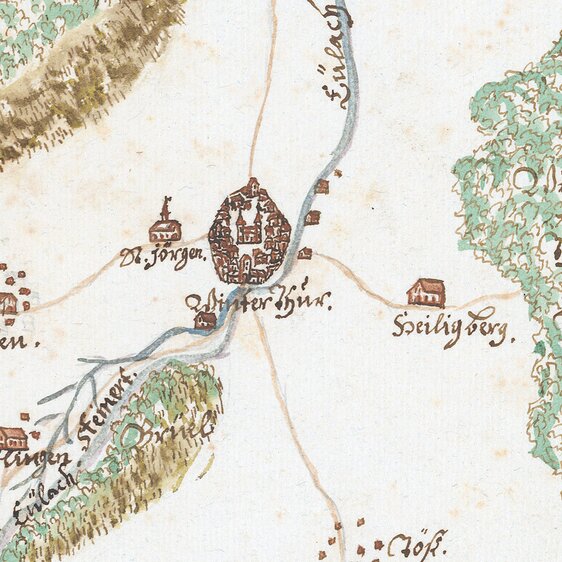National Museum Zurich
| 15.9.2023 - 14.1.2024
Languages are more than merely a means of communication, they also shape our daily lives and are part of our culture. The National Museum Zurich takes visitors on a sensory and entertaining journey through Switzerland’s linguistic landscape.
Anyone passing through one of Switzerland’s major railway stations will immediately notice that, in addition to the four national languages, countless other languages, dialects, accents and types of slang can be heard. Language is subject to constant change and closely linked to the history of humankind and contemporary history. Historical events, such as the Reformation, have decisively shaped the evolution of language: the ‘Zurich Bible’ based on a translation by Zwingli and first printed in 1524 was composed in the ‘Landspraach’, a written variant of the branch of German spoken in the region. However, the Reformers at the other end of what is now Switzerland did not adopt the regional patois, but the French spoken by the haute bourgeoisie of northern France. Today, centuries later, local dialects are dying out fast in the French-speaking part of Switzerland, whereas Swiss German continues to dominate everyday life from Brig to St. Gallen. What happened in the language regions in the intervening period is a story of displacement, prohibition, romanticising, demarcation and mythologising. And language remains highly political to this day. Whether it’s the ‘Röstigraben’ linguistic divide between French- and German-speakers, the Jura issue, teaching English in schools or teenage slang: how we speak is guaranteed to trigger a wealth of emotions. Welcome to Multilingual Switzerland!
The exhibition at the National Museum Zurich presents these topics in an innovative way. Visitors don headphones and move freely through an immersive soundscape. Depending on where they stand, they will hear various acoustic items, including explanations of objects, sound documents and audio tracks from videos, as they follow two fictitious characters through the exhibition: a tour guide (voiced by Cyril Jost in the English version) accompanied by Beat (played by actor and comedian Vincent Kucholl). The two discuss the contents of the exhibition in entertaining dialogues. Guest appearances by Patti Basler, Flavio Sala and Claudio Spescha add to the experience. And people who live in Switzerland but count Albanian, Arabic, Portuguese or sign language as their mother tongue, rather than one of the country’s official languages, are also given a chance to speak. The insights they provide demonstrate that language can be a resource as well as a hindrance, or show that it sometimes simply goes unheard.
The exhibition was realised in collaboration with the Basel-based company idee und klang audio design, which designed the sound scenography using game technology developed by iart. The script for the audio guide was written by Vincent Kucholl. The audio guide is available in German, French, Italian, English and Romansh.




